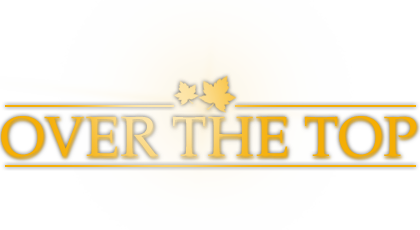 Over The Top
Over The Top
Glossary
All Safe
a signal, given by siren, to announce that it is now safe to remove one’s gas mask after a gas attack.
Artillery
weapon used to fire very large projectiles. Howitzers, guns and mortars are types of artillery. Popularly known as cannons.
Bayonet
steel blade, shaped like a short sword, that is fixed at the end of a rifle and used for hand-to-hand combat.
Billet
a place that is designated for soldiers to receive food and shelter.
Bully Beef
from the French word boulli, meaning boiled. Meat that is pickled or canned, usually corned beef.
Cocked
to “cock” a rifle means to draw back the hammer to prepare it for firing.
Communication wire
type of wire used for establishing telephone connections between posts.
Company
a unit of soldiers, normally consisting of 100 men.
Decoration
a badge of honour; a medal awarded for bravery.
Duck-boards
floor sections made of wooden slats which can be laid on wet, muddy or cold surfaces.
Dugout
shelter dug on the side of a trench, in the ground, used as living quarters, for storage of supplies or for protection.
Firesteps
narrow ledge, located inside a trench, that allows soldiers to see over the parapet.
Fritz
nickname used by Allied soldiers to describe Germans.
Gas mask
cloth and/or rubber mask connected to an air filter and used to protect the face and lungs from poison gases.
Home leave
permission given to soldiers to go home for an extended period of time.
HQ
short form for “Headquarters”; a place from which military commanders perform their duties.
Jerry
nickname used by Allied soldiers to describe Germans.
Kaiser
German word meaning “emperor”. During the First World War, the Kaiser of Germany was Wilhelm II.
Lice
plural form of “louse”; a small, flat, wingless insect that lives off the blood of its host.
Lip
as in “crater’s lip”; the edge of a large hole.
Lollygagging
to waste time.
Mortar
a type of cannon used to fire projectiles at high angles.
No Man’s Land
the narrow, muddy, treeless stretch of land, characterized by numerous shell holes, that separated German and Allied trenches during the First World War. Being in No Man’s Land was considered very dangerous since it offered little or no protection for soldiers.
Parapet
the inner wall of a trench, made of earth and wood and topped with sandbags, to protect soldiers.
Pin
Metal pin that is removed to activate a grenade.
Platoon
a unit of soldiers, normally consisting of 50 men.
Poison gas
type of gas which gives off a poisonous vapour, designed to kill, injure or disable a soldier by inhalation or contact.
Puttees
cloth strip made of wool and wrapped around the leg, from ankle to knee, to prevent trousers from being torn or soiled.
Sap
a tunnel within a trench, dug to a point beneath the enemy’s trenches.
Sector
a portion or division of a large military area.
Shell
an artillery projectile containing an explosive bursting charge.
Sniper
a soldier, armed with a rifle and usually well hidden, who shoots at exposed individuals of an enemy’s forces.
“Stand Down”
permission given to soldiers to leave their defensive positions when an attack by the enemy is deemed unlikely.
Stick grenade
German hand grenade; small, metal container, attached to a stick, which explodes after it is thrown.
Tommy
nickname used by German soldiers to describe British (and Canadian) soldiers.
Trench
a long, deep and narrow hole in the ground, with the earth thrown up in front, dug to protect soldiers from bullets and other projectiles.
Webbing
a type of military back-pack, made of sturdy canvas and containing numerous pouches for carrying the ammunition, water bottle, bayonet, food, clothing and personal belongings of a soldier.
Western Front
the area of military operations during the First World War which ran from Belgium, through northern France, and to the Swiss border.
Work detail
a specific task assigned to an individual or group, usually entailing physical labour.
